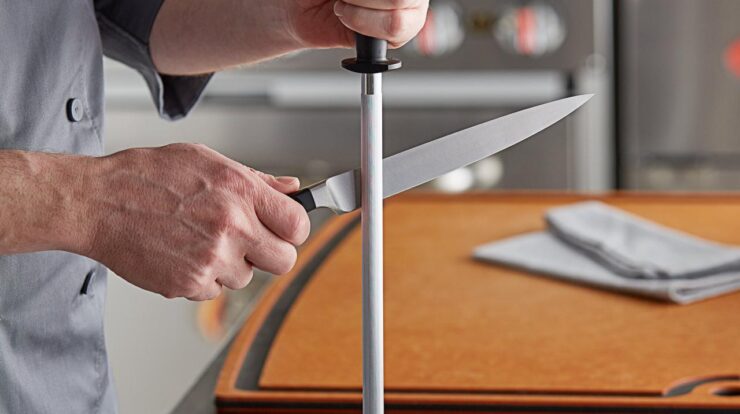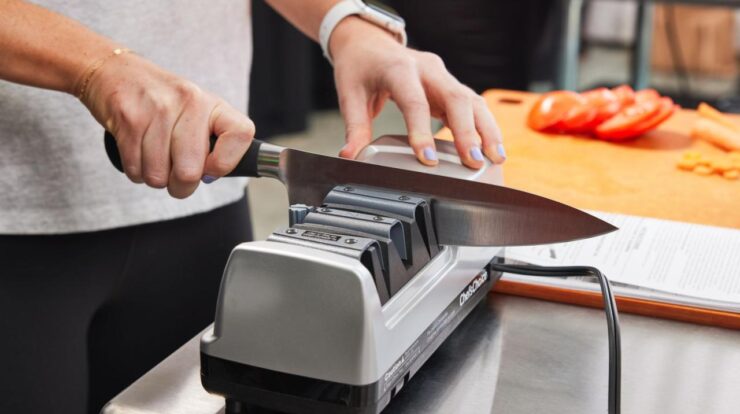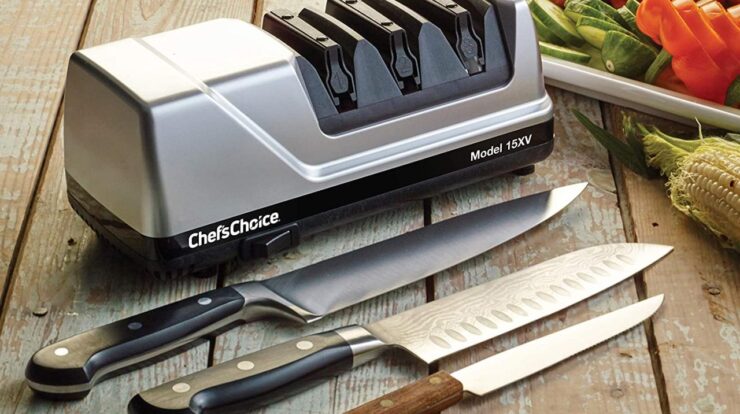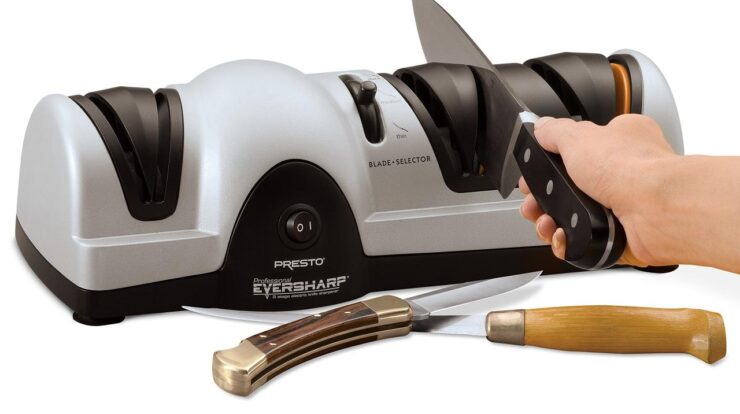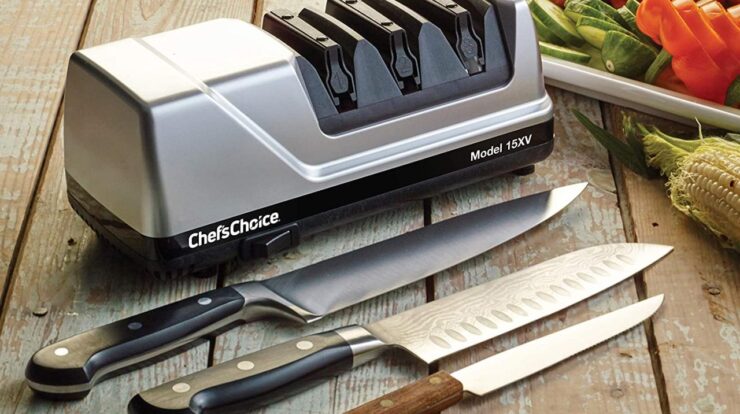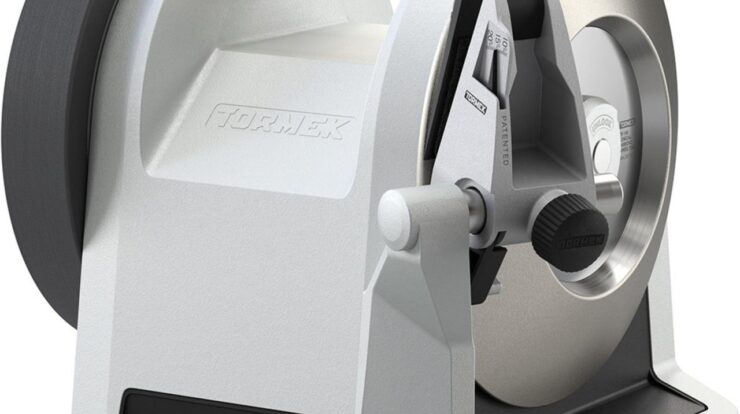Embark on a culinary adventure with electric knife sharpeners, the game-changers in the world of kitchen precision. These innovative devices empower home cooks and professional chefs alike to effortlessly maintain razor-sharp blades, transforming meal preparation into an art form.
In this comprehensive guide, we delve into the intricate workings of electric knife sharpeners, exploring their types, mechanisms, advantages, and disadvantages. We provide expert insights into choosing the perfect sharpener for your needs and guide you through proper maintenance and safety practices.
Get ready to unlock the secrets of electric knife sharpeners and elevate your culinary skills to new heights.
Types of Electric Knife Sharpeners
Electric knife sharpeners are designed to make the task of sharpening knives quick and easy. They come in a variety of types, each with its own features and benefits.
One of the most common types of electric knife sharpeners is the pull-through sharpener. These sharpeners have a series of abrasive slots that the user pulls the knife through. The slots are typically angled to create a specific sharpening angle, which can be adjusted to suit the type of knife being sharpened.
Pull-through sharpeners are relatively inexpensive and easy to use, making them a good choice for home cooks. However, they can be less effective than other types of sharpeners, and they can also damage knives if they are not used correctly.
Another type of electric knife sharpener is the belt sharpener. These sharpeners use a rotating belt to sharpen knives. The belt is typically made of a fine abrasive material, which creates a sharp edge on the knife.
Belt sharpeners are more expensive than pull-through sharpeners, but they are also more effective. They can be used to sharpen a wider variety of knives, and they are less likely to damage knives.
Finally, there are also electric knife sharpeners that use a diamond wheel to sharpen knives. These sharpeners are the most expensive type, but they are also the most effective. They can be used to sharpen a wide variety of knives, and they can create a very sharp edge.
Pull-Through Sharpeners
Pull-through sharpeners are a popular choice for home cooks because they are inexpensive and easy to use. They have a series of abrasive slots that the user pulls the knife through to sharpen it.
The main advantage of pull-through sharpeners is that they are very easy to use. Simply insert the knife into the slot and pull it through a few times. The abrasive slots will sharpen the knife to the desired angle.
However, pull-through sharpeners can also be less effective than other types of sharpeners. The abrasive slots can quickly become dull, and they can also damage knives if they are not used correctly.
Belt Sharpeners
Belt sharpeners use a rotating belt to sharpen knives. The belt is typically made of a fine abrasive material, which creates a sharp edge on the knife.
Belt sharpeners are more expensive than pull-through sharpeners, but they are also more effective. They can be used to sharpen a wider variety of knives, and they are less likely to damage knives.
The main advantage of belt sharpeners is that they can create a very sharp edge on a knife. They are also relatively easy to use, and they can be used to sharpen a wide variety of knives.
Diamond Wheel Sharpeners
Diamond wheel sharpeners use a diamond wheel to sharpen knives. The diamond wheel is very hard, which makes it ideal for sharpening knives.
Diamond wheel sharpeners are the most expensive type of electric knife sharpener, but they are also the most effective. They can be used to sharpen a wide variety of knives, and they can create a very sharp edge.
The main advantage of diamond wheel sharpeners is that they can create a very sharp edge on a knife. They are also very durable, and they can be used to sharpen a wide variety of knives.
Mechanism of Electric Knife Sharpeners
Electric knife sharpeners utilize a rotating sharpening wheel or belt to sharpen the blade. The sharpening wheel or belt is coated with abrasive material, such as diamond or ceramic, which removes metal from the blade to create a sharp edge.
The sharpening process typically involves holding the blade against the rotating sharpening wheel or belt at a specific angle. The angle at which the blade is held determines the sharpness of the edge. A smaller angle creates a sharper edge, while a larger angle creates a more durable edge.
Sharpening Angles, Electric knife sharpener
The most common sharpening angles for kitchen knives are 15 degrees, 20 degrees, and 25 degrees. A 15-degree angle creates a very sharp edge that is ideal for slicing and cutting delicate foods. A 20-degree angle is a good all-purpose angle that is suitable for most kitchen tasks.
A 25-degree angle creates a more durable edge that is less likely to chip or dull.
The optimal sharpening angle for a particular knife depends on the type of knife and the intended use. For example, a chef’s knife that is used for chopping and slicing may be sharpened at a 20-degree angle, while a paring knife that is used for peeling and slicing small items may be sharpened at a 15-degree angle.
Advantages and Disadvantages of Electric Knife Sharpeners

Electric knife sharpeners offer a range of advantages and disadvantages compared to manual sharpening methods. Understanding these factors can help you make an informed decision about whether an electric sharpener is right for you.
Advantages of Electric Knife Sharpeners
- Ease of Use:Electric knife sharpeners are incredibly user-friendly, making them accessible to people of all skill levels. Simply insert the knife into the designated slot and let the machine do the work.
- Speed:Electric sharpeners can sharpen knives significantly faster than manual methods, saving you time and effort.
- Precision:Electric sharpeners typically use precision-engineered abrasives to ensure an even and consistent edge on your knives.
Disadvantages of Electric Knife Sharpeners
- Cost:Electric knife sharpeners can be more expensive than manual sharpeners, especially for high-quality models.
- Potential Damage to Knives:If not used properly, electric sharpeners can potentially damage your knives by overheating or removing too much metal.
- Limitations:Electric sharpeners may not be suitable for all types of knives, such as those with serrated or very hard blades.
Factors to Consider When Choosing an Electric Knife Sharpener
Selecting the right electric knife sharpener requires careful consideration of various factors that impact its effectiveness and suitability for your specific needs. Here are some key factors to keep in mind when making your choice:
Blade Type
Different types of knives have different blade shapes and angles. Ensure the electric knife sharpener you choose is compatible with the blade type you intend to sharpen. Some sharpeners are designed for specific blade types, such as serrated or straight-edged knives, while others can accommodate a wider range of blade types.
Sharpening Angle
The sharpening angle is crucial for achieving the desired sharpness and edge retention. Different knives require different sharpening angles. Choose an electric knife sharpener that allows you to adjust the sharpening angle to match the specific requirements of your knife.
Speed
The speed of the electric knife sharpener determines how quickly it can sharpen your knife. Sharpeners with higher speeds can sharpen knives faster, but they may also generate more heat, which can damage the blade if not used properly. Consider the speed of the sharpener in relation to the type of knife you are sharpening.
Safety Features
Safety is paramount when using an electric knife sharpener. Look for features such as non-slip feet, finger guards, and overheat protection to ensure safe operation. Some sharpeners also have built-in safety switches that prevent accidental activation.
Maintenance and Care of Electric Knife Sharpeners
Maintaining and caring for your electric knife sharpener is crucial to ensure optimal performance and longevity. Here are some essential maintenance and care techniques to follow:
Cleaning
Electric knife sharpeners accumulate metal shavings and debris during use. Regular cleaning is essential to prevent buildup and maintain efficient sharpening. Use a soft brush or cloth to remove loose debris from the sharpening slots and other surfaces. For stubborn residue, use a damp cloth with a mild detergent solution.
Avoid using abrasive cleaners or harsh chemicals that can damage the sharpener’s components.
Lubrication
Moving parts in electric knife sharpeners require lubrication to reduce friction and wear. Periodically lubricate the gears, bearings, and other moving components with a light machine oil. This will ensure smooth operation and extend the sharpener’s lifespan.
Storage
When not in use, store your electric knife sharpener in a clean, dry place. Avoid exposing it to extreme temperatures or moisture, which can damage the components. Keep the sharpener away from children and pets for safety reasons.
Safety Precautions for Using Electric Knife Sharpeners
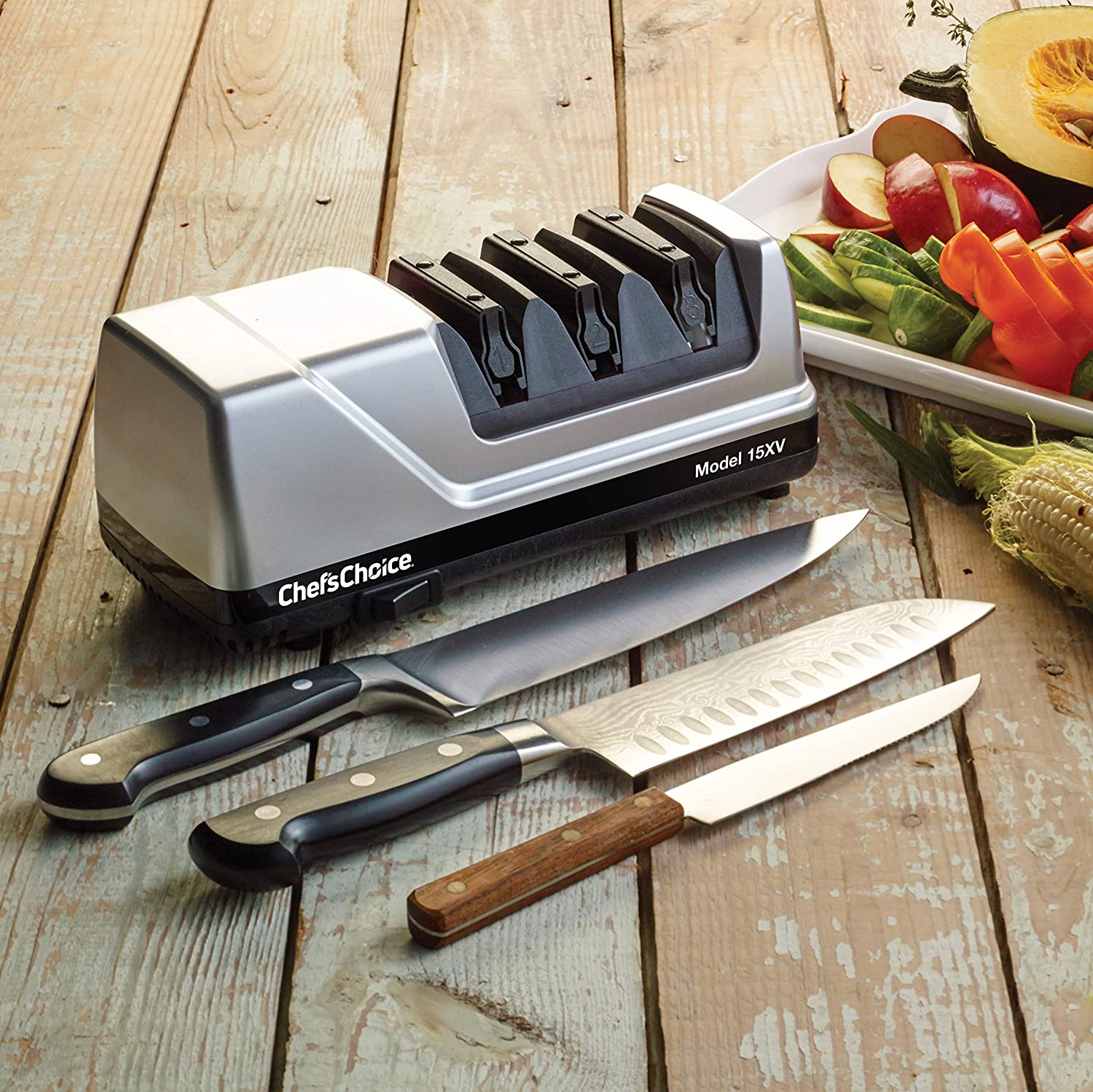
Using electric knife sharpeners requires adherence to safety precautions to prevent accidents and injuries. Understanding proper handling techniques and potential hazards is crucial for safe operation.
Proper Handling of Sharp Knives
- Always keep knives sharp, as dull knives require more force to use, increasing the risk of accidents.
- Handle knives with care, keeping them pointed downwards or in a knife block when not in use.
- Avoid leaving knives unattended, especially in the presence of children.
- When passing a knife to someone, always hold it by the handle and extend it with the blade facing away from you.
Avoiding Potential Hazards
- Inspect the electric knife sharpener before each use, ensuring there are no loose parts or damage.
- Never operate the sharpener with wet hands or in wet conditions.
- Securely hold the knife during sharpening, avoiding contact with the spinning sharpening wheel.
- Keep the work area clean and free of distractions to maintain focus while sharpening.
Comparison of Electric Knife Sharpeners with Other Sharpening Methods
Electric knife sharpeners offer convenience and speed, but how do they compare to traditional sharpening methods? Let’s explore the pros and cons of each method.
Manual Sharpening with Whetstones
- Advantages:
- Provides precise control over the sharpening angle and pressure.
- Can achieve a sharper edge than electric sharpeners.
- Versatile and can be used for various blade types.
- Disadvantages:
- Requires skill and practice to use effectively.
- Time-consuming and physically demanding.
Manual Sharpening with Honing Steels
- Advantages:
- Quick and easy to use.
- Helps maintain an edge between sharpenings.
- Disadvantages:
- Cannot fully sharpen a dull knife.
- Can damage the blade if used improperly.
Electric Knife Sharpeners
- Advantages:
- Convenient and easy to use.
- Can quickly sharpen knives to a consistent edge.
- Disadvantages:
- May not achieve as sharp an edge as manual sharpening.
- Can remove more metal from the blade, reducing its lifespan.
Recommendation
For occasional sharpening and quick touch-ups, electric knife sharpeners are a convenient choice. However, for precise sharpening and achieving the sharpest edge possible, manual sharpening with whetstones is recommended.
Ultimate Conclusion
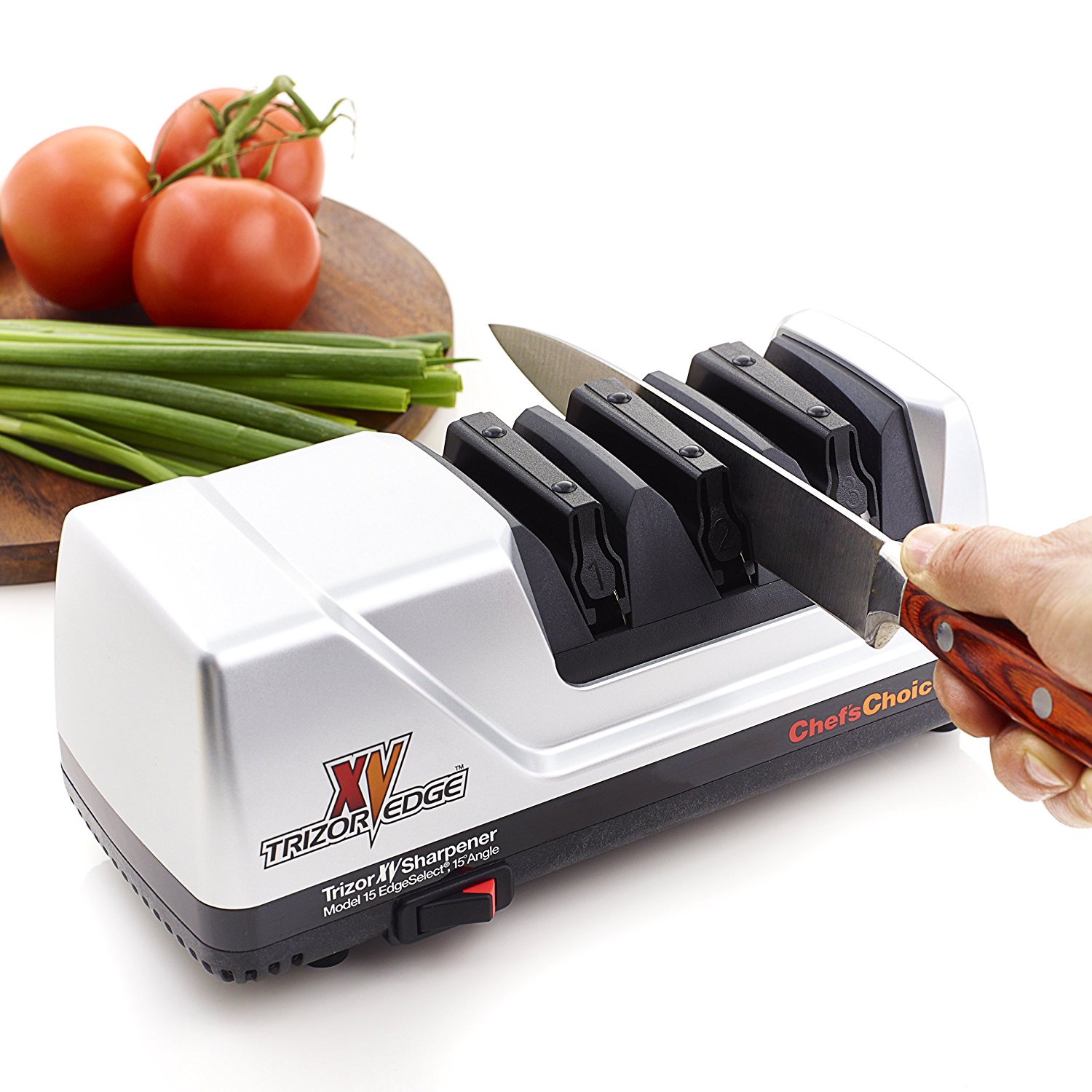
As you master the art of electric knife sharpening, you’ll witness a remarkable transformation in your kitchen. Effortlessly slice through ingredients with precision, creating culinary masterpieces that will impress family and friends alike. Embrace the power of electric knife sharpeners and embark on a journey of culinary excellence.
Key Questions Answered
What are the different types of electric knife sharpeners available?
Electric knife sharpeners come in various types, including belt sharpeners, disk sharpeners, and pull-through sharpeners. Each type offers unique advantages and is suitable for specific knife types and sharpening needs.
How do electric knife sharpeners work?
Electric knife sharpeners utilize abrasive materials to remove metal from the knife’s edge, creating a sharp and precise cutting surface. The sharpening angle, which varies depending on the sharpener type, determines the sharpness and durability of the blade.
What are the benefits of using electric knife sharpeners?
Electric knife sharpeners offer numerous benefits, including ease of use, speed, and precision. They are ideal for individuals who lack sharpening skills or prefer a quick and convenient way to maintain their knives.
What factors should I consider when choosing an electric knife sharpener?
When selecting an electric knife sharpener, consider factors such as blade type, sharpening angle, speed, safety features, and budget. Determine your specific sharpening needs and choose a sharpener that meets those requirements.
How do I maintain and care for my electric knife sharpener?
Proper maintenance is crucial for optimal performance and longevity of your electric knife sharpener. Clean the sharpener regularly, lubricate moving parts as needed, and store it in a dry and safe location.
